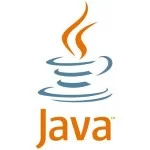Apache Camel vs Apache Kafka: Understanding the Differences
Apache Camel and Apache Kafka are two prominent technologies that serve distinct purposes in the realm of distributed systems and integration. While both are utilized to handle messaging and data flow, they differ in their architecture and functionality. Apache Camel is an integration framework that facilitates routing, transformation, and mediation between various systems, while Apache Kafka is a distributed streaming platform designed to manage real-time data pipelines and high-throughput messaging.
This article will explore the core features and use cases of Apache Camel and Apache Kafka, compare their strengths, and offer guidance on choosing the right technology for various integration and streaming scenarios.
1. Overview of Apache Camel
Apache Camel is an open-source integration framework that focuses on routing and transforming data between different systems. Its primary strength lies in its ability to mediate and orchestrate communications between various components in a distributed environment. Camel allows you to define complex routing rules using Enterprise Integration Patterns (EIPs) that make it flexible and adaptable for a variety of integration tasks.
1.1 Apache Camel Use Cases
Apache Camel excels in scenarios that require routing, transformation, and mediation of messages between different endpoints or systems. It’s well-suited for:
- Legacy System Integration: Camel can bridge the gap between older systems and modern technologies by offering connectors for various protocols.
- Microservices Communication: In a microservices architecture, Camel can serve as the integration layer, connecting services and enabling communication across different technologies.
- ETL (Extract, Transform, Load): Camel facilitates data transformation and routing in ETL processes, where data needs to be extracted from various sources, transformed, and loaded into databases or other systems.
1.2 Pattern-based Development in Apache Camel
One of the standout features of Apache Camel is its use of Enterprise Integration Patterns (EIPs), which provide well-defined solutions to common integration problems. These patterns allow developers to design integration solutions consistently and efficiently. Some of the common patterns used in Camel include:
- Content-Based Routing: Routing messages to different destinations based on their content.
- Message Transformation: Converting messages from one format to another, such as from XML to JSON.
- Splitter: Breaking down large messages into smaller parts for processing.
Pattern-based development in Apache Camel helps developers quickly implement solutions for complex integration scenarios without reinventing the wheel. By leveraging predefined patterns, Camel ensures that integration is modular, maintainable, and scalable.
2. Overview of Apache Kafka
Apache Kafka is a distributed streaming platform designed for handling high-throughput, low-latency event streaming. Kafka is primarily used to build real-time data pipelines and streaming applications. It is highly scalable, fault-tolerant, and designed to handle large volumes of data efficiently.
Kafka is built around the concept of topics, where messages are produced and consumed by different systems. It can store data for a defined retention period, making it an excellent choice for event-driven architectures and systems that require real-time analytics and data processing.
2.1 Apache Kafka Use Cases
Apache Kafka is ideal for scenarios that require real-time data streaming, event-driven architectures, and high-throughput messaging. Some key use cases include:
- Real-Time Data Pipelines: Kafka is frequently used in scenarios where data needs to be ingested, processed, and consumed in real-time. For example, logging systems and monitoring platforms use Kafka to collect and process logs.
- Event Sourcing: Kafka is often used in event-driven systems where state changes are captured as a sequence of events. This makes it easy to rebuild application state at any point in time.
- Data Streaming and Analytics: Kafka is commonly used to stream data for real-time analytics, such as monitoring customer activity or processing clickstream data from websites.
- Log Aggregation: Kafka can aggregate logs from different systems and make them available for analysis, making it an essential tool for centralizing log data from multiple services.
2.2 Components in Apache Kafka
Apache Kafka provides several components that help facilitate message delivery and data processing. These components are critical to understanding how Kafka handles messages efficiently:
- Producer: The producer is responsible for sending messages to Kafka topics. It pushes data to Kafka brokers and can be configured to produce messages to specific topics.
- Consumer: The consumer reads messages from Kafka topics. Consumers can be part of a consumer group to share message consumption, providing horizontal scalability.
- Broker: A Kafka broker is a server that stores and manages the messages produced to Kafka topics. Kafka clusters can have multiple brokers, which help distribute the workload.
- ZooKeeper: While not a part of Kafka itself anymore, ZooKeeper is used for distributed coordination and management in earlier versions of Kafka. As of the latest versions, Kafka aims to eliminate the need for ZooKeeper with its KRaft mode.
- Kafka Connect: Kafka Connect simplifies integration with external systems like databases, file systems, and cloud services, enabling seamless data flow into and out of Kafka.
3. Key Differences Between Apache Camel and Apache Kafka
While both Apache Camel and Apache Kafka handle messaging, they are designed to solve different problems:
3.1 Primary Purpose
- Apache Camel is an integration framework designed to route, transform, and mediate messages between different systems and protocols.
- Apache Kafka is an event streaming platform designed to handle large volumes of real-time data streams and provide a highly scalable, fault-tolerant messaging system.
3.2 Communication Model
- Camel supports both synchronous and asynchronous communication models, allowing for complex message routing and transformation.
- Kafka operates on a publish-subscribe model and is inherently asynchronous, optimized for handling large-scale event streaming.
3.3 Data Persistence
- Camel doesn’t focus on message persistence, but rather on the routing and mediation of data between systems.
- Kafka is designed for message persistence, storing messages in topics for a configurable retention period, making it ideal for event sourcing and log aggregation.
3.4 Scalability
- Camel is scalable through clustering, but it is typically used for lower-throughput integration scenarios.
- Kafka is highly scalable, designed for horizontal scaling to handle millions of messages per second across multiple brokers and consumers.
3.5 Use Case Focus
- Camel is ideal for integration and mediation, making it a great choice for connecting disparate systems, routing messages, and transforming data.
- Kafka is best for streaming and real-time data processing, serving as the backbone for systems that require high throughput and low-latency event streaming.
4. When to Use Apache Camel vs Apache Kafka
4.1 When to Use Apache Camel
- When you need to integrate systems that use different protocols and data formats.
- For implementing complex Enterprise Integration Patterns (EIPs) like routing, transformation, and aggregation.
- If your use case involves system mediation, such as integrating legacy systems with modern technologies.
4.2 When to Use Apache Kafka
- When building real-time data pipelines that require high-throughput, low-latency processing.
- In scenarios involving event-driven architecture, where data is processed as a series of events.
- When you need message durability and persistence, such as in log aggregation or event sourcing.
5. Conclusion
This article explored Apache Camel vs Apache Kafka, highlighting their distinct roles in integration and real-time data streaming. While Apache Camel is well-suited for routing, transformation, and system mediation, Apache Kafka excels in handling high-throughput, distributed messaging and event-driven architectures. The choice between the two depends on specific use cases. Apache Camel for enterprise integration patterns and Apache Kafka for scalable, fault-tolerant data streaming. In many cases, they can complement each other to build robust, efficient architectures. Understanding their strengths enables businesses to select the right tool for their integration and messaging needs.
This article focused on Apache Camel vs Apache Kafka, highlighting their differences and use cases.





